Growing up in Hawaii, Kanoelehua Kaumeheiwa, now known as Kanoe Miller, experienced a childhood many wouldn’t expect in the diverse islands. Despite Hawaii’s multicultural environment, her Hawaiian first name often felt like a source of embarrassment. While classmates boasted last names reflecting their varied heritages—Kahale, Fukushima, Chung—their first names were typically Westernized: Stephanie, Myron, Dave, Mary. “Every time the teacher would call roll, she’d struggle over my name,” Kanoe recalls. This struggle was a recurring event, class after class, year after year, throughout her schooling. “Every grade, every class, even through high school, they struggled to pronounce my name. So much so that, whenever she was calling roll and it got to the K’s and you could see the teacher stop, the whole class would go, ‘Oh, she’s here!’”
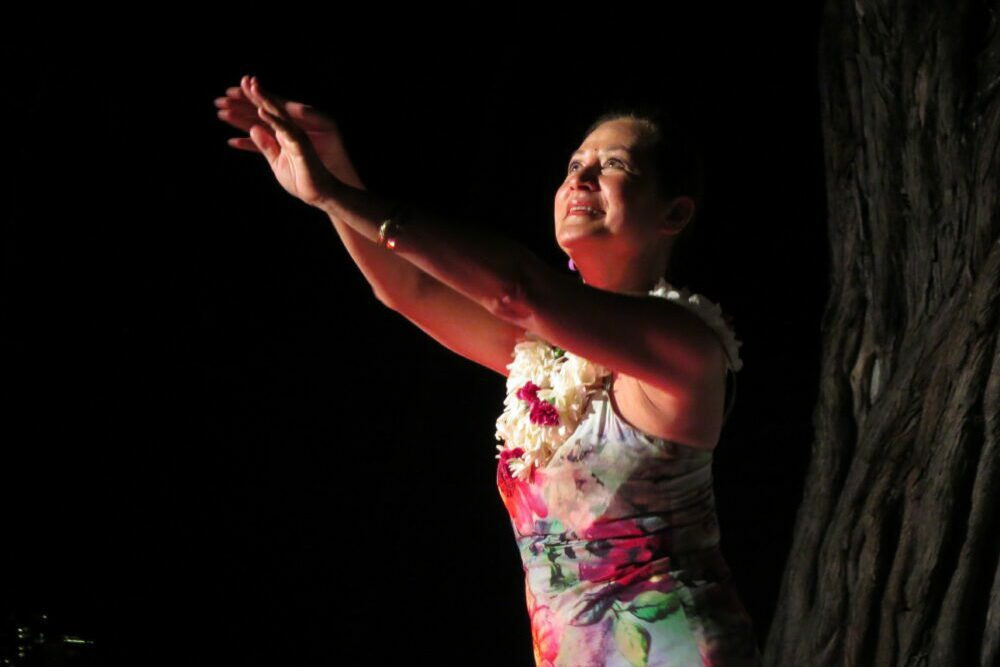 Kanoe Miller performing at House Without a Key
Kanoe Miller performing at House Without a Key
Now, Kanoe can reflect on these moments with a smile. However, in the 1960s, the experience was far from amusing for a shy young girl. “That always made me ashamed because it singled me out,” she explains. “I was shy. This was 1960, before awareness of ethnicity, ethnic pride. And I thought about changing my name.” When she confided in her parents, her father, deeply rooted in his Hawaiian heritage, reacted with anger. He insisted, “You need to be proud of who you are. And there’s only one person with your name, so you have to be proud of it.” His words resonated deeply as Kanoe matured. Venturing into modeling and beauty pageants, she realized the uniqueness of her name was an asset. “I was the only one with that name. So it was memorable. And then I had pride in it.”
This pride is palpable every time Kanoe graces the stage as a Hula Dancer. Recognized as possibly the most photographed hula dancer globally, her image has graced countless publications. Her performances are readily available online, captivating a devoted fanbase who regularly watch her dance at the iconic House Without a Key. This elegant restaurant, nestled within Waikiki’s Halekulani hotel, has been Kanoe’s performance home for over four decades, solidifying her status as a legendary hula dancer.
Interestingly, becoming a world-renowned hula dancer wasn’t Kanoe’s childhood aspiration. “My mother forced me to take lessons,” she laughs. “I didn’t want it. I wanted to take tap. But she said, ‘You have to go because it’s a summer special, and I can put you and your two sisters in there for $12 a month.’ This is in 1966, ’67.” Despite her initial resistance, hula quickly captured her heart. “But I ended up liking it. And I feel like I learned that I have the soul of a dancer. Because dancers love discipline, they like music, and they like to express. Hula gave me all of that.” Hula dancing became more than just a pastime; it became an integral part of her identity.
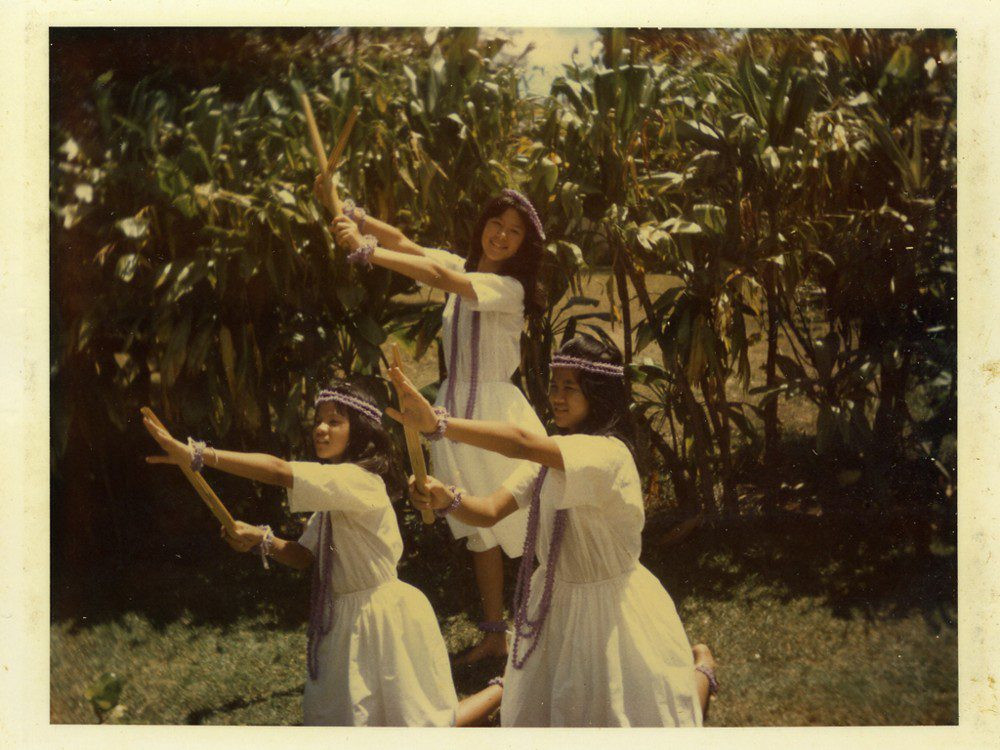 Kanoe and her sisters in their younger years
Kanoe and her sisters in their younger years
As Kanoe’s modeling career took off in her teenage years, her hula instructor, Ma‘iki Aiu Lake, noticed a shift in her focus. “I would come to class in a not correct attitude,” Kanoe admits. “I would come to class with makeup, lipstick, dressy go-go boots, fishnet stockings — I just wasn’t right.” Ma‘iki, a respected kumu hula, took a firm stance. “So she scolded me and asked me to leave.” This temporary dismissal served as a course correction. When Kanoe decided to compete for Miss Hawaii in 1973, she knew she needed a talent, and hula was her calling. “I had to go back and ask Ma‘iki if I could do a particular hula which was written for her. That’s the right way to do it; you have to ask permission.” Ma‘iki granted permission, and Kanoe’s performance led her to victory. “Winning Miss Hawaii put me on the track of sort being in two worlds. I was modeling, but I was also dancing — one foot in the whole modeling fashion scene, and another foot in the Hawaiian cultural scene, which was unusual. Most people either did one or the other.” This dual identity set her apart, blending glamour with cultural depth as a hula dancer.
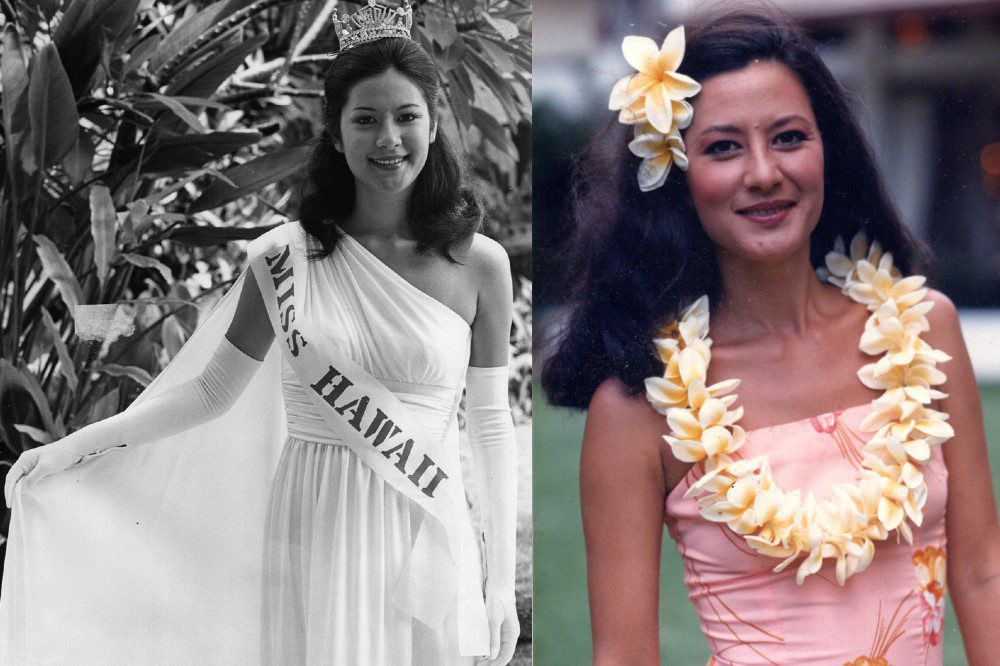 Kanoe Miller as Miss Hawaii in 1973 and a decade later in 1983
Kanoe Miller as Miss Hawaii in 1973 and a decade later in 1983
This unique position coincided with a pivotal era for Hawaiian culture. The 1970s witnessed the Hawaiian Renaissance, a cultural resurgence aimed at reclaiming traditions suppressed for decades. The arrival of missionaries in the 1820s marked the beginning of this repression, with hula dancing among the banned practices. King Kalakaua, known as the “Merrie Monarch,” who reigned from 1874 to 1891, played a crucial role in reviving Hawaiian dance, an act commemorated by the annual Merrie Monarch Festival. However, following his death and the annexation of Hawaii by the United States after the overthrow of the Hawaiian monarchy in 1893, cultural suppression returned. By the time Hawaii became a US state in 1959, speaking Hawaiian in schools was discouraged.
“The Hawaiian language had almost died,” Kanoe explains, highlighting the cultural challenges of the time. “Hawaiian music had almost died. When you walked through Waikiki, the whole Hawaiian traditional thing was not heard very much. It wasn’t ‘in’ and it wasn’t cool.” The Hawaiian Renaissance sought to reverse this cultural decline. “Everybody was finding their Hawaiian roots,” Kanoe recounts. “People who maybe didn’t come out initially to say, ‘I’m Hawaiian’ or be proud of who they were, now came out. And if they had middle names that were Hawaiian, now they called themselves by their middle name.” Ironically, after marrying John Miller, Kanoe sometimes faced questions about not retaining her Hawaiian last name. “And by then I been married for, what, fifteen years?” she recalls of one such conversation. “And I said, ‘You know what? I’m proud to be his wife, and I’m proud to be Miller. So I’ll just keep it as Miller.’” Her decision reflected a personal choice amidst a broader cultural shift.
Post Miss Hawaii, hula steered Kanoe’s career in an unexpected direction. In 1976, an invitation to substitute for a sick dancer at House Without a Key opened a new chapter. She became a regular fill-in, her consistent availability contrasting with the transient nature of other dancers. “It was something of a throwaway job,” she describes. “Nobody really wanted it. It was very unglamorous. At the time, in the ’70s, the big shows were happening, really wonderful big shows, Polynesian revues, and there was a lot of work for dancers; if you could do Tahitian and Maori and Samoan dances, you had a job.” However, hula remained Kanoe’s forte. In 1977, she secured a permanent position at House Without a Key, initially one night a week, which grew to six nights (currently, she performs every Saturday and every other Friday), establishing her long-term presence as a premier hula dancer in Waikiki.
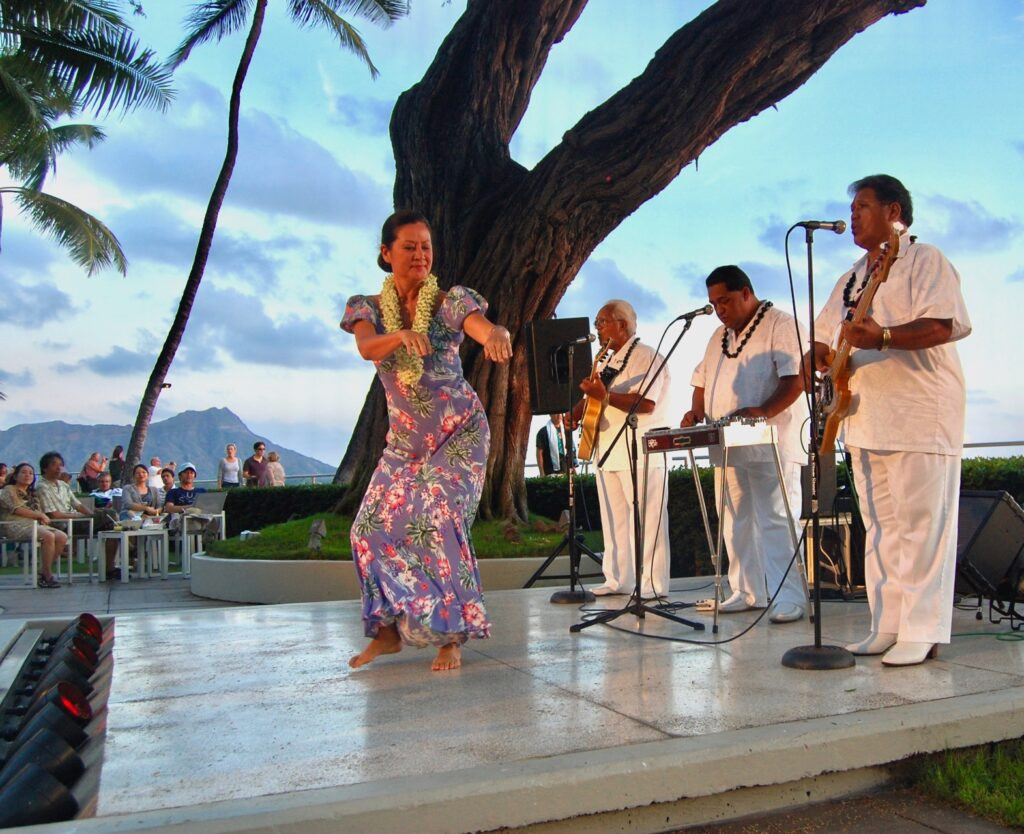 Kanoe Miller gracefully performing hula at House Without a Key
Kanoe Miller gracefully performing hula at House Without a Key
“I loved it because it just fit me,” she expresses about her role at House Without a Key. The musical variety resonated deeply with her. The bands played a rich repertoire, from songs of the Hawaiian kingdom’s final days to the hapa haole tunes of the 1930s, reminiscent of the “Royal Hawaiian Hotel kind of period—‘Lovely Hula Hands,’ ‘Dancing Under the Stars,’ ‘I’ll Weave a Lei of Stars for You’—that romantic hapa haole, very lyrical, beautiful, descriptive of the natural beauty of Hawaii.” She also appreciated contemporary slack key and folksy Hawaiian music, “the kind of music you would hear on someone’s back porch.” Kanoe even admits to a fondness for “cheesy stuff, like ‘Hawaiian Vamp’—I love to put on that cellophane skirt and dance around.” This eclectic musical landscape became the soundtrack to her hula performances.
For Kanoe, hula transcends mere entertainment; it is a profound art form, a mode of communication, and a guardian of history. Before the Hawaiian language was written, history was preserved through recitation and hula. Each movement in hula carries meaning, telling stories through “lovely hula hands.” “Hula expresses who we are as a people, as a culture,” Kanoe emphasizes. “I have had really good training and I had the best teacher, who was very into the culture, and expressing hula from inside out. Not just thinking about hula like, ‘How’s my hair and makeup, how’s my hands?’ No. It’s more like, ‘Where am I inside?’ I study the words, study the meaning, study the backstory and the history of the song. Then I can come here and dance it. If you don’t know what the song is about, you haven’t done your homework. That’s the way my teacher used to make me think.” This deep cultural understanding informs every aspect of her hula dancing.
While Kanoe occasionally performed at private events, she found them less fulfilling. These shows often reduced her role to background entertainment. “So it struck me, like, ‘Where are you appreciated, Kanoe? You’re appreciated at the Halekulani.’ And so I stopped taking those other gigs. At Halekulani, I feel like I’m doing something more important than just being somebody on the stage at a corporate event. And over the years, I began to think of it almost like my home, kind of like an extension of what I grew up with. I was raised in a very Hawaiian house; you come inside, you take off your shoes, you leave all your anxiety outside, and then my father would pull out his ukulele and my brother his guitar, and we would all start singing and playing. Our back porch became a place friends came to gather. And when I’m on stage at Halekulani, I feel like I’m at home—the audience are like my guests, they’re not strangers.” House Without a Key became more than a venue; it became an extension of her Hawaiian home and values.
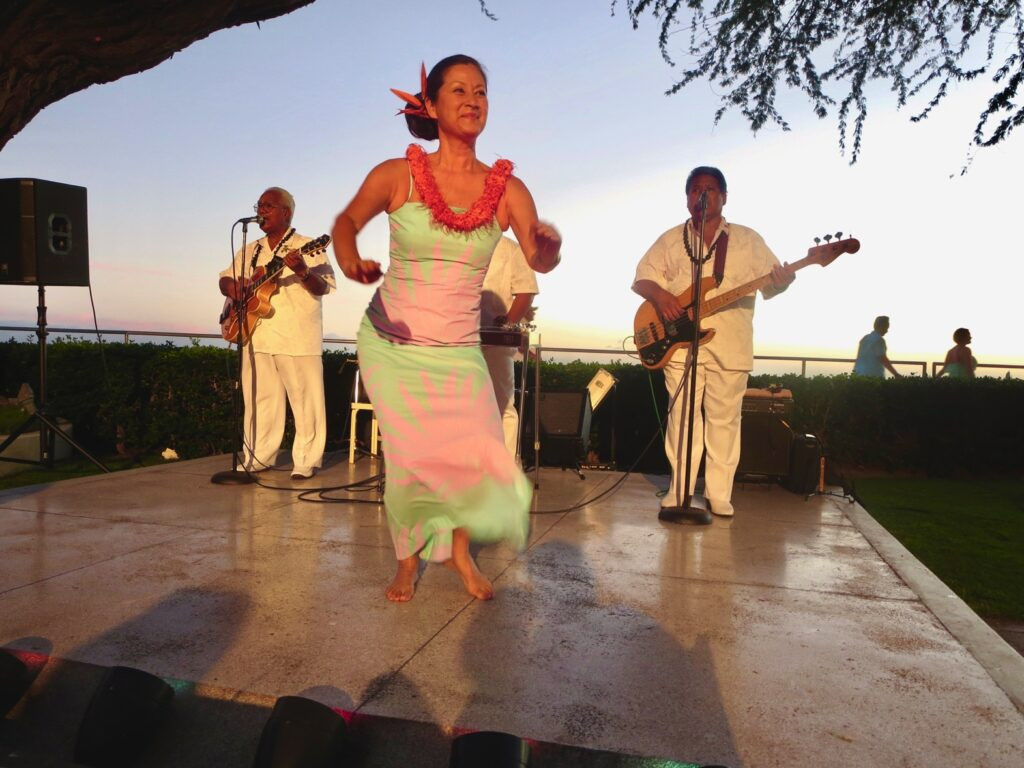 Kanoe Miller in a vibrant hula performance at House Without a Key
Kanoe Miller in a vibrant hula performance at House Without a Key
Kanoe expanded her reach with various projects beyond her nightly performances. She and her husband produced the DVD Romantic Waikiki Hula. Promoting the DVD led to larger scale shows in Japan, where hula enjoys immense popularity. She also started teaching hula classes in Japan and Hawaii. Her ventures included a digital magazine, Hula Studio, and international performances. Through it all, her performances at House Without a Key remained a constant draw. Life was vibrant and fulfilling, marked by her dedication to hula.
Then, the pandemic brought unforeseen changes.
The first signs of disruption appeared when Kanoe traveled to Japan in March 2020 to renew her artist visa in person. While there, she tried to arrange gatherings with her students, but concerns over Prime Minister Shinzo Abe’s warnings against public gatherings led to cancellations. “So I got my visa and I just went right back home. And a week later, Halekulani’s general manager called me and said, ‘We’re closing this weekend, so you don’t have to come to work. And we don’t know when we’ll be open again.’” Her scheduled April shows in Japan were also canceled, and the ensuing lockdown in Hawaii halted her dance classes. Suddenly, all her income streams vanished.
“Believe me, March and April were like, fear and desperation,” she admits. “Then one of my students said to me, ‘Why don’t you try teaching on Zoom?’ And I said, ‘What is that?’” Embracing new technology, Kanoe and her husband explored “the Zoom thing.” Their living room transformed into a makeshift dance studio, equipped with mirrors, sound, lighting, iPhones, cameras, and their first ever 70-inch TV. “We’d never owned a television; we always felt it was an ugly piece of furniture, and we just would read or listen to music. So the first time we had a TV screen in our house was like, ugh! But it was necessary.” Necessity spurred innovation in her hula practice.
 Kanoe Miller posing in her home studio setup
Kanoe Miller posing in her home studio setup
Social media advertising quickly attracted students to her online classes. However, teaching hula online presented a steep learning curve. “The very first class made me so crazy because I was not used to seeing all these people on the screen going in different directions; it looks like everyone’s not on the beat. And that’s what I thought at first; ‘Wow, these people aren’t hearing the beat at all.’ Every single person, their hand was in different positions. What the hell is this?” The initial experience left her disheartened. “I just thought ‘Oh, my God, this was a mistake. I can’t do this.’ I just rolled myself into a ball on the couch and cried. I did! I thought, ‘Geez, we just changed everything around to do this and we spent all this money. And I think it was a terrible mistake.’” The technical challenges of online teaching initially overwhelmed her.
Realizing the issue was due to streaming delays of up to seven seconds, which caused the perception of off-beat dancing, Kanoe adjusted her approach. Advice from tech-savvy friends further aided her transition. “They said, ‘You need to just calm down and get used to it,’ and they gave me several suggestions. And it turned out to be a wonderful thing, because I was able to reach people all over the world. And of course, people during the pandemic needed something to do because they were stuck in their houses. How perfect. So it actually worked out good for me. I feel like I’m reaching an audience that would have loved to take hula, and now they can, you know? And I think this is the way of the world now and it’s going to go in this direction. So although I may lose some people once things open up, I think I can still continue to have online students.” Online teaching became an unexpected success, expanding her reach as a hula dancer and instructor.
During the pandemic, Kanoe and her husband also developed an online show, Hawaiian Rendezvous, inspired by the classic radio program Hawaii Calls. As restrictions eased in 2021, House Without a Key reopened, bringing back live Hawaiian music and her cherished performances.
Despite her long career, Kanoe notes a decline in Hawaiian music in Waikiki’s beachfront venues since her early days in the 1970s. “Yes, it has gone away,” she observes. “And it’s not because of lack of talent, it’s because of lack of space. The music and the dance is not the focus; the focus is drinking and having a good time. It’s much easier to just put a musician or two in the corner, so the space for a stage is gone. And then where is the hula dancer going to dance? Well, sadly, right next to the table; it’s not classy and it doesn’t give focus to our culture. That’s why I feel so thankful to be at the Halekulani. And right next door [at the Outrigger Reef hotel] is the Kani Ka Pila Grille, and they have Hawaiian music too, thank God. It’s more backyard time, slack key, which I like; ours is a little more uptown, more elegant.” She values the venues that still prioritize Hawaiian culture.
Ironically, Kanoe, a champion of Hawaiian music and dance, has faced criticism for performing for tourists. “Isn’t that ironic?” she muses. “I think about that. I used to get put down a lot. I still kind of do get put down by certain people. But on the other hand, I’m the one that’s out there trying to share what the hula is—not that the others wouldn’t. It’s just that, sadly, there’s no place for them. That’s what has to change.” She sees her performances as a vital platform for cultural preservation and outreach.
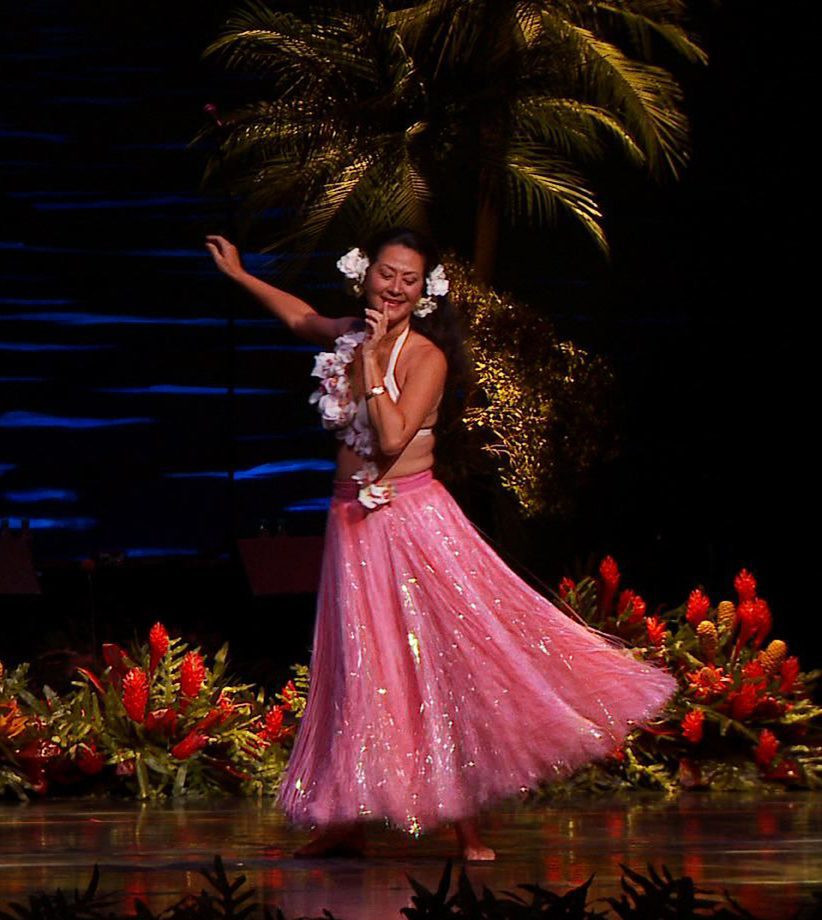 Kanoe Miller shining on stage at the Hawaii Theatre
Kanoe Miller shining on stage at the Hawaii Theatre
For Kanoe, being a hula dancer is fundamentally about sharing the richness of Hawaiian culture. “Watching me dance is just the tip of the iceberg,” she explains. “It’s just a tip of our culture. And if you want to study it, you can dive down real deep and learn more about it. But people who are here visiting for one week don’t have that kind of time. So I hope that people watching me dance get a sense of the spirit of this place, that they feel like, ‘Wow, that’s something really special, I can tell by the music and I can tell by the dance.’ That’s what I want them to feel.” Her performances are designed to spark curiosity and respect for Hawaiian traditions.
She concludes, “When I perform the hula, I want the audience to get a sense of Hawaii; its spirit and its natural beauty, its history, and its character. And I want the audience to experience aloha. That they have felt aloha somehow, whether it’s through my dance or whether I spoke with them, or whether my musicians went up to their table and laughed with them. I want the people to get a sense that they felt aloha. That’s what’s important to me. And I guess that’s just the bottom line.” Kanoe Miller’s legacy as a hula dancer is deeply rooted in sharing the aloha spirit and the essence of Hawaiian culture with the world.
Follow Kanoe Miller on Facebook for ongoing updates.

